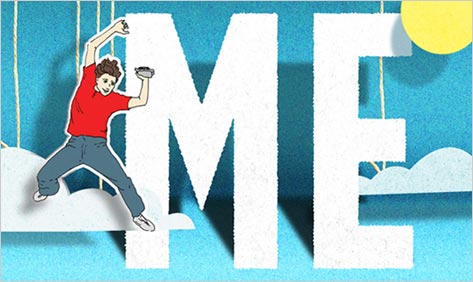Me and Earl and the Dying Girl

High school, according to popular cliché and the sworn experience of many bona fide ex- and current teens, is a place Balkanized by cliques: the Sharks vs. the Jets; the greasers vs. the Socs; preps vs. punks. But whether it reflects some new, enlightened adolescent reality or wishful authorial imagining, the high schools in many recent young adult novels look less like a John Hughes movie and more like some fresh, modern mash-up of oddballs and eccentrics.
“On television, it’s usually the rich kids who assert control at a high school,” acknowledges Greg Gaines, the “me” in Me and Earl and the Dying Girl, Jesse Andrews’s debut novel for young adults. “However, most of Squirrel Hill’s genuinely rich kids go to the local private school, Shadyside Academy. The ones that remain are too few to impose any kind of order.” As a result, there is a “vacuum” at the top of the social hierarchy in Greg’s Pittsburgh public high school.
The titular trio of the novel form an especially unlikely group. Greg is the son of proud eccentrics: his father is a classics professor at Carnegie Mellon who wears a muumuu around the house, collects odd foods, and talks to his cat, Cat Stevens, as if he were a person. Greg’s ex-hippie mother, meanwhile, runs a Jewish nonprofit but gave her children “sneaky Anglo-Saxon names” so they could be “surprise Jews.”
Greg’s best friend, Earl, “lives unsupervised with two brothers, three half brothers, and a dog” in a large house where they “play video games and eat Dominos pretty much all the time”; the adult men are long gone; Earl’s mother is usually busy with something that “involves Bacardi Silver mojitos and chat rooms”; and his thirteen-year-old brother has a “TRU NIGGA” neck tattoo and has already managed to impregnate someone. Greg and Earl have been best friends since age ten, when they discovered Greg’s father’s stash of art films, and share a passion for Werner Herzog.
Rachel Kushner is a member in good standing of the “Upper-Middle-Class Senior Jewish Girl Sub-Clique 2a.” She is also dying of leukemia. When Greg’s mother hears about Rachel’s illness, she insists that he resume their previous friendship. “[You] don’t have a choice,” she tells him, “It’s a mitzvah.” ” ‘Mitzvah,’ ” says Greg, “is Hebrew for ‘colossal pain in the ass.’ “
Unfortunately, Greg’s friendship with Rachel had “no honest foundation and ended on screamingly awkward terms.” Although Greg describes himself as “pale, overweight,” and “sort of like a pudding” with “kind of a rat face,” Rachel once had a crush on him. He was the only one who could make her laugh.
Humor, in fact, one of the two major things that Greg and Earl have in common. Their friendship consists of a series of routines they regularly perform for outsiders and each other, such as the following set piece in which Greg “narrates Earl’s behavior” as if “he had an irritating personal assistant who actually wasn’t useful in any way.” This exchange begins when a teacher explains that Department of Education regulations forbid him from sharing his pho with Earl and tells Earl he has to get his own soup:
Earl: “I ain’t got no eatin-out money.”
Greg: “Earl has no money allocated for that purpose.”
Earl: “Tryna get some soup up in here.”
Greg: “Earl was hoping to have some of your soup.”
Etcetera. In addition to their partnership in such moments of school hallway improv, their shared love of filmmaking has resulted in dozens of home-directed films, some of which feature sock puppets, almost all of which are unintentionally hilarious in their badness. The two have had a solemn pact to restrict the viewing of their films to an audience of two; however, once Rachel asks to see the movies, they have a hard time saying no. What are they going to do? Deny happiness to the dying girl?
“Cheering up Rachel was one of the things I had gotten really good at,” says Greg. “And when you’re really good at something, you want to do it all the time, because it makes you feel good. So if I wanted to hang out with Rachel, it was mainly for selfish reasons.”
Andrews’s novel is one of several recent young adult novels that uses humor to deflect the mawkish sentiment and clichéd notion that one learns “Important Life Lessons” or experiences “Moments When We Knew We Had Left Our Childhood Behind for Good” by simple virtue of becoming acquainted with death. The best of these, like John Green’s The Fault in Our Stars, manage to wrangle love, death, the big questions of existence, and humor into one astonishing package. Andrews isn’t trying for that particular bundle. His contribution — and it is an excellent one — is finding the ways in which a bright, funny, often self-loathing group of friends wrestle with big adult issues in fits and starts, without necessarily understanding it all in flashes of deep insight or sudden moral clarity.